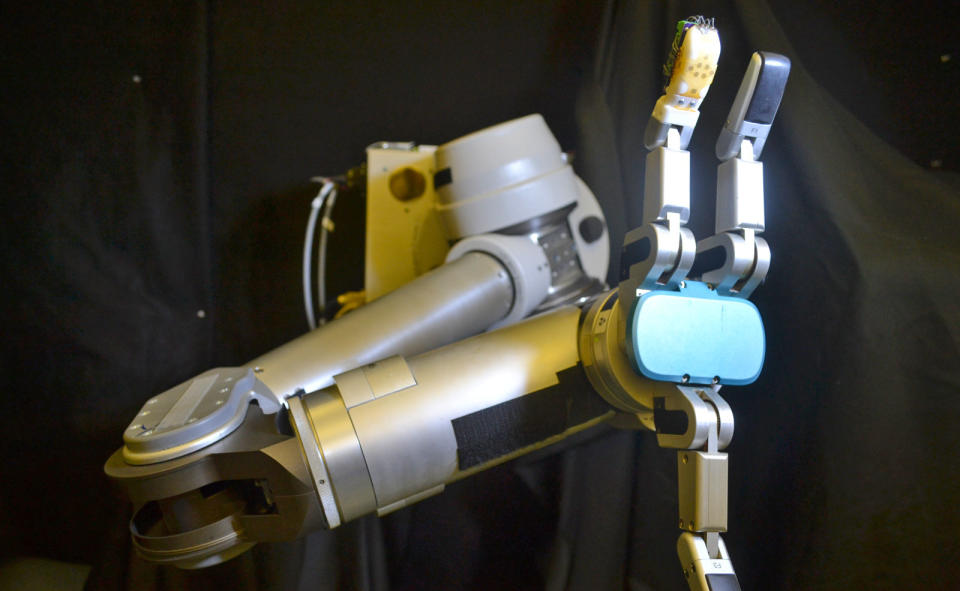Stretchable 'skin' gives robots the sense of touch
The skin mimics the way a human hand can feel.
Robots show a lot of promise as first responders, but they can't effectively dismantle bombs or perform delicate first aid procedures if they can't feel what they're touching. To remedy that problem, a team of engineers from the University of Washington and UCLA have developed stretchable skin that can cover any part of a robot. The skin can give a machine the power to sense vibrations and shear force, or the unaligned forces that push one part of the body in one direction and another part in the opposite.
Ever slid your finger across a flat surface? You'll notice that a part of your flesh under the nail bulges out in the opposite direction of where you're sliding to, while the other side gets pulled taut. That's shear force at work -- and that's one of the things the artificial skin can mimic. See, the team embedded very, very tiny serpentine channels throughout the stretchable material and filled them with electrically conductive liquid metal. As the University of Washington explains:
"As the robot finger slides along a surface, serpentine channels embedded in the skin and filled with electrically conductive liquid metal stretch on one side of the [robotic] finger and compress on the other. This changes the amount of electricity that can flow through the channels, which can be correlated with shear force and vibration."
By giving the skin the ability to sense vibrations and forces, team leader Jonathan Posner said "we have achieved a level of sensitivity and precision that's consistent with human hands." It's an important breakthrough, which could lead to robots that can perform delicate surgery and disarm explosives without the need for remote human operators.


